Introduction
In an era where communication channels are constantly evolving and expanding, the ability to effectively analyze and leverage communication data has never been more critical. Communication mining, a sophisticated process of extracting actionable insights from various forms of communication, holds the key to unlocking unprecedented levels of efficiency and engagement within organizations. By employing advanced analytical techniques such as natural language processing, machine learning, and sentiment analysis, businesses can transform unstructured communication data into strategic intelligence.
This article delves into the intricacies of communication mining, exploring its fundamental principles, key techniques, and real-world applications. From enhancing customer service and marketing strategies to revolutionizing internal communications and operational processes, the potential benefits of this technology are vast. Furthermore, the future trends and ethical considerations surrounding communication mining will be examined, providing a comprehensive understanding of how organizations can harness its power responsibly and effectively.
What is Communication Mining?
Data mining entails the systematic examination of interaction data to derive significant insights and trends. This includes a wide variety of forms of interaction, such as emails, chat messages, social media exchanges, and phone conversations. Utilizing advanced analytical methods, entities can achieve a clearer insight into trends, increase engagement, and improve overall efficiency in interaction.
For instance, tools like AI-driven solutions can simplify interactions with complex systems, improving productivity and accessibility. IBM’s Watsonx Assistant for Z, for example, uses natural language processing and machine learning to enable users to interact with mainframes using plain language. Such innovations can bridge the skills gap and promote more widespread adoption of advanced technologies.
Furthermore, companies such as Qualtrics leverage extensive experience information to assist firms in recognizing and tackling friction points, attracting top talent, and introducing the appropriate products to the market. With almost 20,000 entities utilizing its AI features, Qualtrics has created one of the largest repositories of human sentiment worldwide, showcasing the strength of sentiment analysis to achieve substantial business results.
Furthermore, the exponential increase in information volume and channels requires effective strategies for handling and analyzing this material. Advanced AI tools provide promising solutions to improve productivity, efficiency, and collaboration, ensuring that organizations can keep pace with the increasing demands of contemporary interaction environments.
How Communication Mining Works
Communication mining utilizes advanced algorithms and processing techniques to analyze extensive volumes of communication information, often sourced from issue trackers. These tools, integral to software development, manage diverse information such as requirements and maintenance tasks. With agile methodologies gaining prominence, the complexity of issue trackers has surged, encompassing numerous projects and countless issues. Natural Language Processing (NLP) is crucial in interpreting text information, transforming unstructured text into structured formats by employing syntactic and semantic analysis. As one expert explains, NLP enables computers to comprehend and respond to human language meaningfully by applying Natural Language Understanding (NLU) and Natural Language Generation (NLG). Simultaneously, machine learning algorithms identify patterns and trends within this information. For instance, in the realm of issue trackers, these algorithms help navigate and manage the evolving web of issues, facilitating the extraction of actionable insights. This multi-step process—gathering data from various sources, cleansing it, and then analyzing it—ultimately informs strategic decisions, enhancing operational efficiency and productivity.
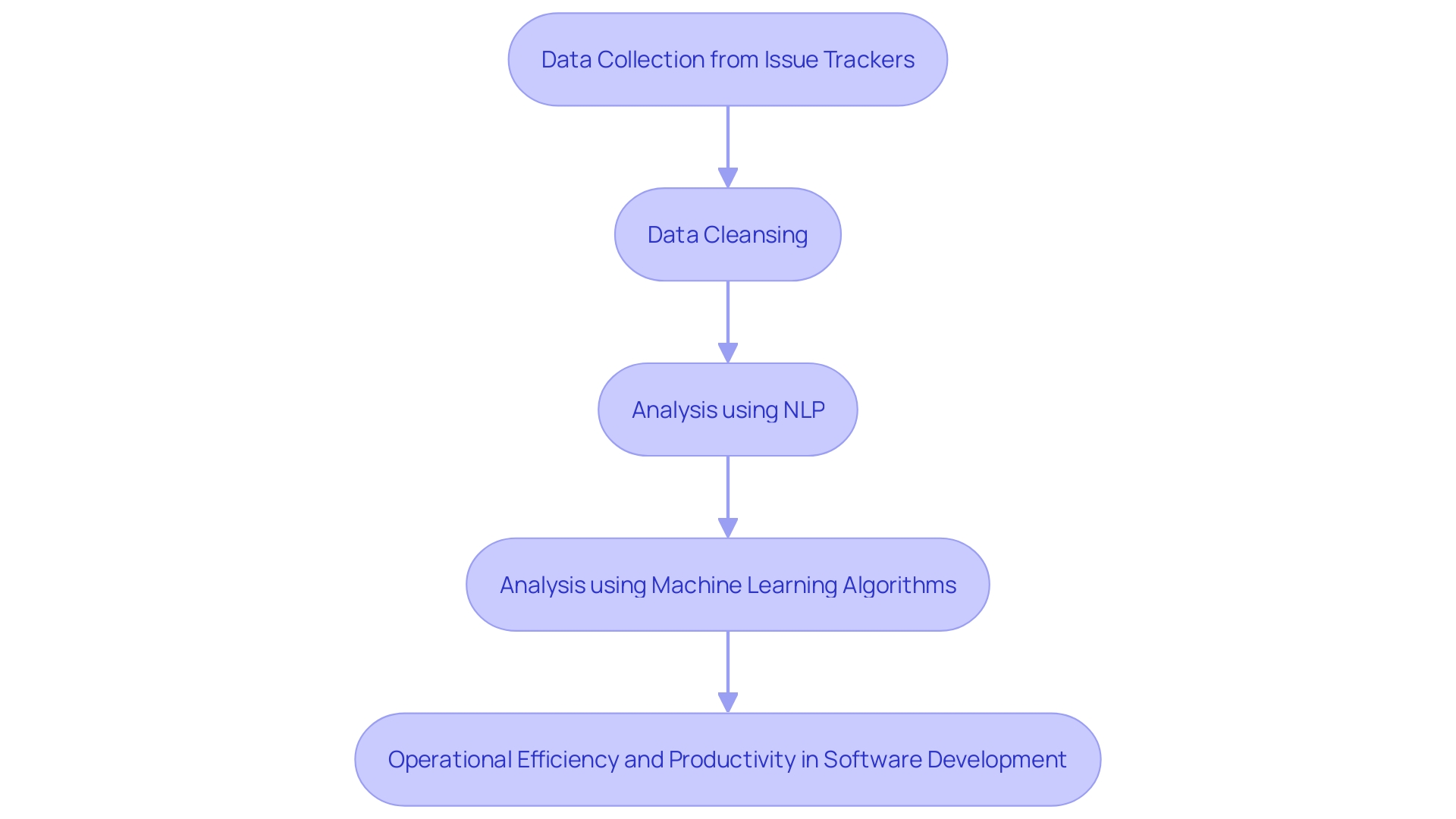
Key Techniques in Communication Mining
Several advanced techniques are pivotal in information extraction, each offering unique insights into organizational interactions. Sentiment analysis, for instance, utilizes machine learning and natural language processing to determine the emotional tone behind words, allowing businesses to assign quantitative scores to subjective opinions. This method has proven invaluable in gauging public perception, as evidenced during the COVID-19 pandemic when researchers used sentiment analysis to measure public responses to news and developments surrounding the virus.
Topic modeling is another crucial technique that identifies common themes across various interaction channels. This approach was effectively demonstrated in a few-shot pipeline for topic analysis during the FIFA World Cup in Qatar, showcasing its ability to uncover prevailing topics in large datasets.
Network analysis, on the other hand, examines the relationships and interactions between different communicators. This technique can reveal key influencers and communication bottlenecks, offering a detailed map of how information flows within a company. According to Hossein Hassani and Nadejda Komendantova, this type of social intelligence analysis aids us in comprehending the wider societal effects of our online interactions, offering a deeper insight into market dynamics and trends.
Combined, these techniques enable entities to transform qualitative feedback into quantifiable metrics, improving their capacity to hear from customers at scale and adopt data-informed strategies.
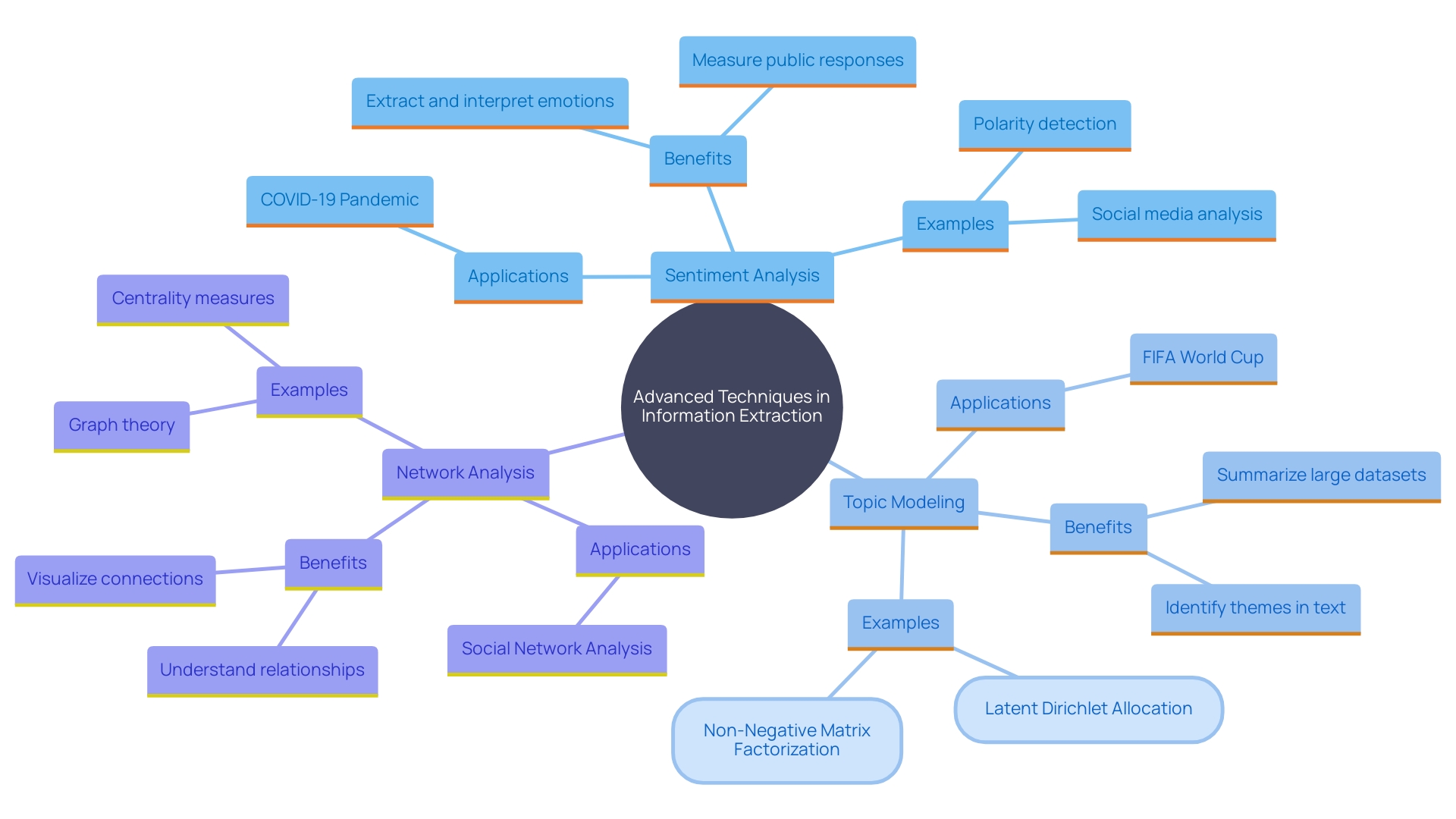
Applications of Communication Mining
‘Communication analysis offers transformative potential across various industries by leveraging data to enhance efficiency and productivity.’. In the customer service sector, this technology enables organizations to significantly improve response times, streamline operations, and boost customer satisfaction. By identifying common issues and preemptively addressing them, companies can move from reactive to proactive and even preemptive service models. This shift not only resolves problems before they affect customers but also enhances overall service quality.
In marketing, dialogue analysis enables brands to closely observe social media discussions, offering insights into consumer preferences and emerging trends. ‘With 5.04 billion social media users worldwide and an annual growth rate of 5.6%, this information is invaluable for crafting targeted marketing strategies that resonate with a broad audience.’. The ability to analyze real-time social media interactions helps brands stay ahead of the curve and adapt quickly to changing consumer behaviors.
Within organizations, information analysis can transform internal dialogue by promoting better collaboration and identifying areas for enhancement among teams. For instance, developing a shared information model and standardized analytical frameworks, as observed with major telecommunication groups, can accelerate the rollout of new use cases and innovations from months to just weeks. This kind of approach not only enhances operational efficiency but also drives technology transformation and revenue generation, aligning with the evolving priorities of modern customer care leaders.
Spotify’s success in integrating communication mining into their podcast platform is a testament to its effectiveness. By examining user information and feedback, Spotify has managed to expand its podcast offerings significantly, now hosting over 100,000 video podcasts globally. ‘This strategic use of information has not only increased user engagement but has also positioned Spotify as a leader in the audio content industry.’.
Incorporating data mining with existing APIs further enhances its advantages. This integration facilitates smooth data collection and analysis, offering companies with actionable insights in real-time. The exponential rise in information exchange volume and channels underscores the necessity for such advanced tools to maintain high-quality interactions and efficient workflows. By adopting these technologies, businesses can not only enhance their operational processes but also improve their overall interaction strategies, ensuring sustained growth and competitiveness in a rapidly evolving digital landscape.
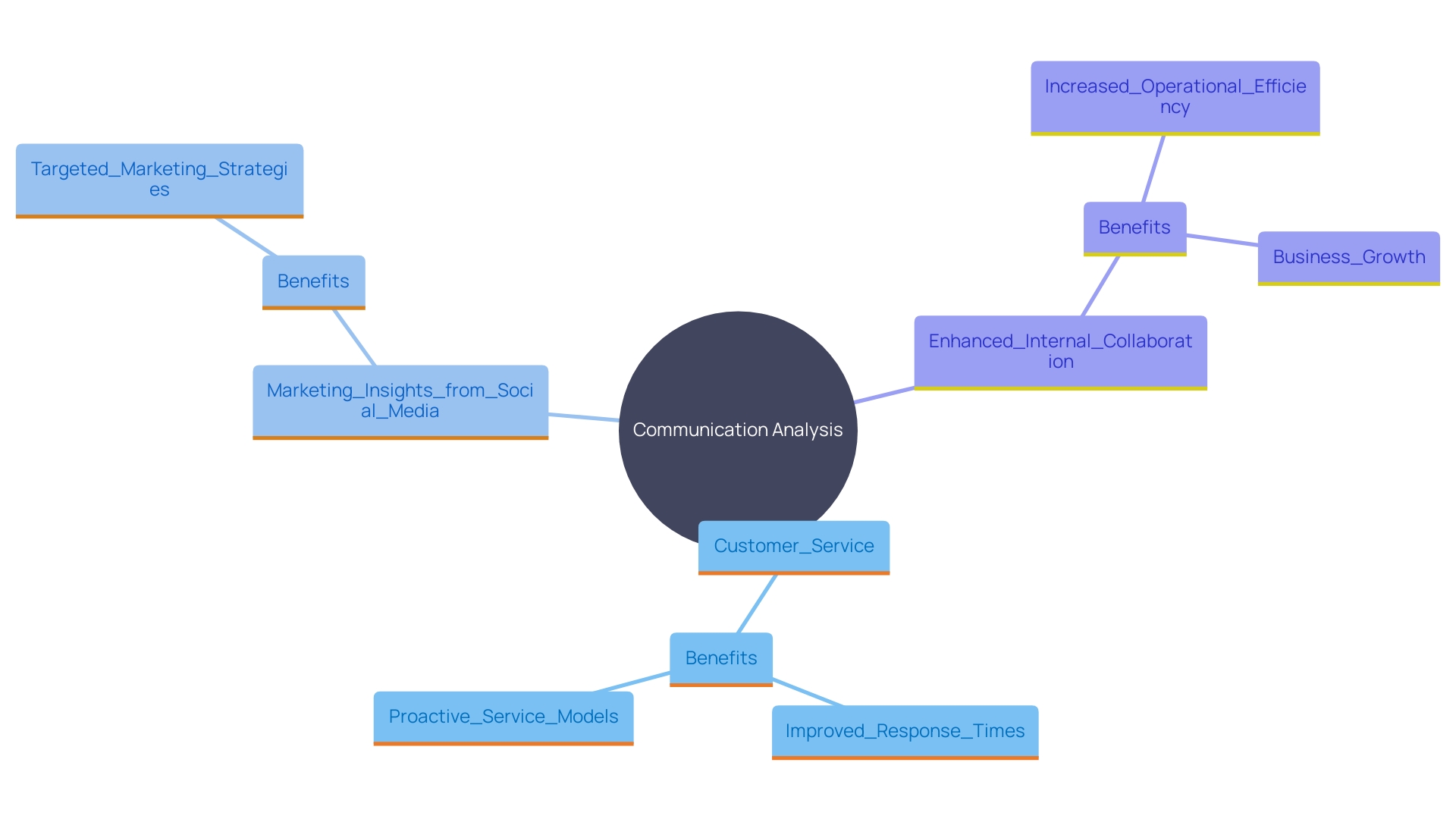
Benefits of Communication Mining for Businesses
The benefits of information extraction are extensive and transformative for organizations. By examining interaction data, businesses can make knowledgeable, data-driven choices that improve customer engagement through personalized interactions. This technology simplifies internal interaction processes, enabling seamless collaboration and efficiency.
Utilizing insights from message analysis, companies can adjust and enhance their strategies to better address customer needs, ultimately driving growth. For example, a recent study showed that 84% of entities perceive integrated messaging solutions as the future of business interactions. This highlights the vital role of effective interaction in maintaining competitive advantage and operational excellence.
Furthermore, information extraction assists organizations in navigating the intricate terrain of contemporary digital engagement. As emphasized in a study on the role of business in society, top CEOs stress the significance of prioritizing interactions at the heart of their duties, engaging deeply with stakeholders. This approach not only fosters a culture of empathy and understanding but also propels organizational success.
In the context of worldwide operations, tools such as Crawford Technologies’ ILA, which offers real-time multilingual interaction, illustrate the practical uses of information extraction. Such tools ensure accessibility and inclusivity, eliminating miscommunication and enhancing user experience across diverse customer bases.
Ultimately, information extraction provides companies with the resources to not only enhance internal processes but also to foster more significant, tailored interactions with clients, promoting sustained growth and operational efficiency.
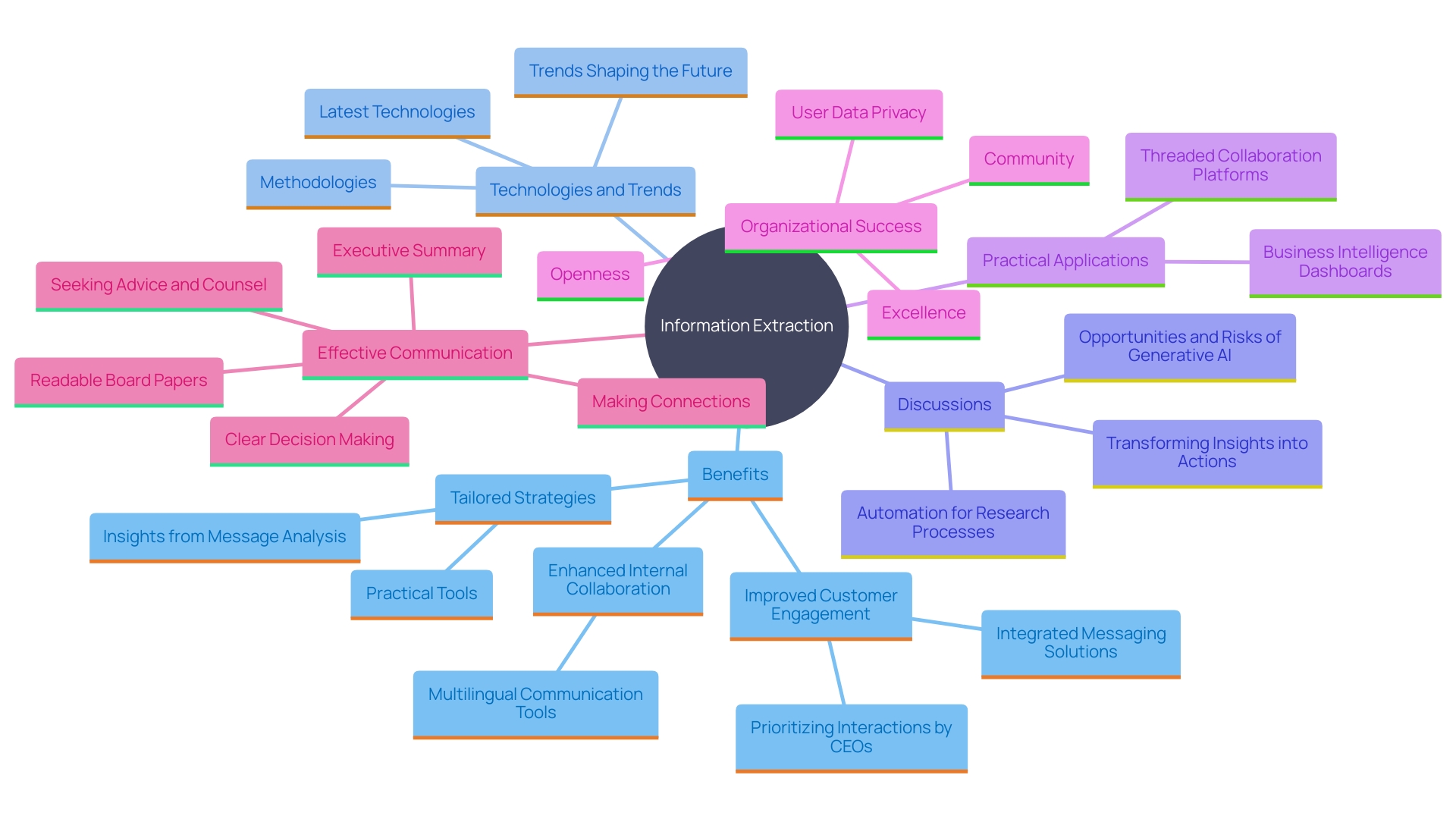
Real-World Use Cases of Communication Mining
Many organizations have effectively utilized information extraction to improve their operations, demonstrating its extensive potential. For example, Western Union, a prominent financial services firm, employed analytics to examine customer interactions across different platforms. By analyzing this data, they gained insights into customer personas, purchasing habits, and efficient interaction channels, which allowed them to reduce churn and optimize marketing efforts. This strategic approach helped Western Union stay competitive in the evolving market by providing a better customer experience and operational efficiency.
Likewise, another persuasive illustration originates from a financial organization that utilized information analysis to identify inefficiencies in its customer service procedures. By examining customer feedback and interaction patterns, they were able to streamline their operations, resulting in significantly faster response times and enhanced customer satisfaction. This case highlights the significance of incorporating advanced analytical models and a cohesive information strategy to drive operational enhancements and elevate customer experiences.
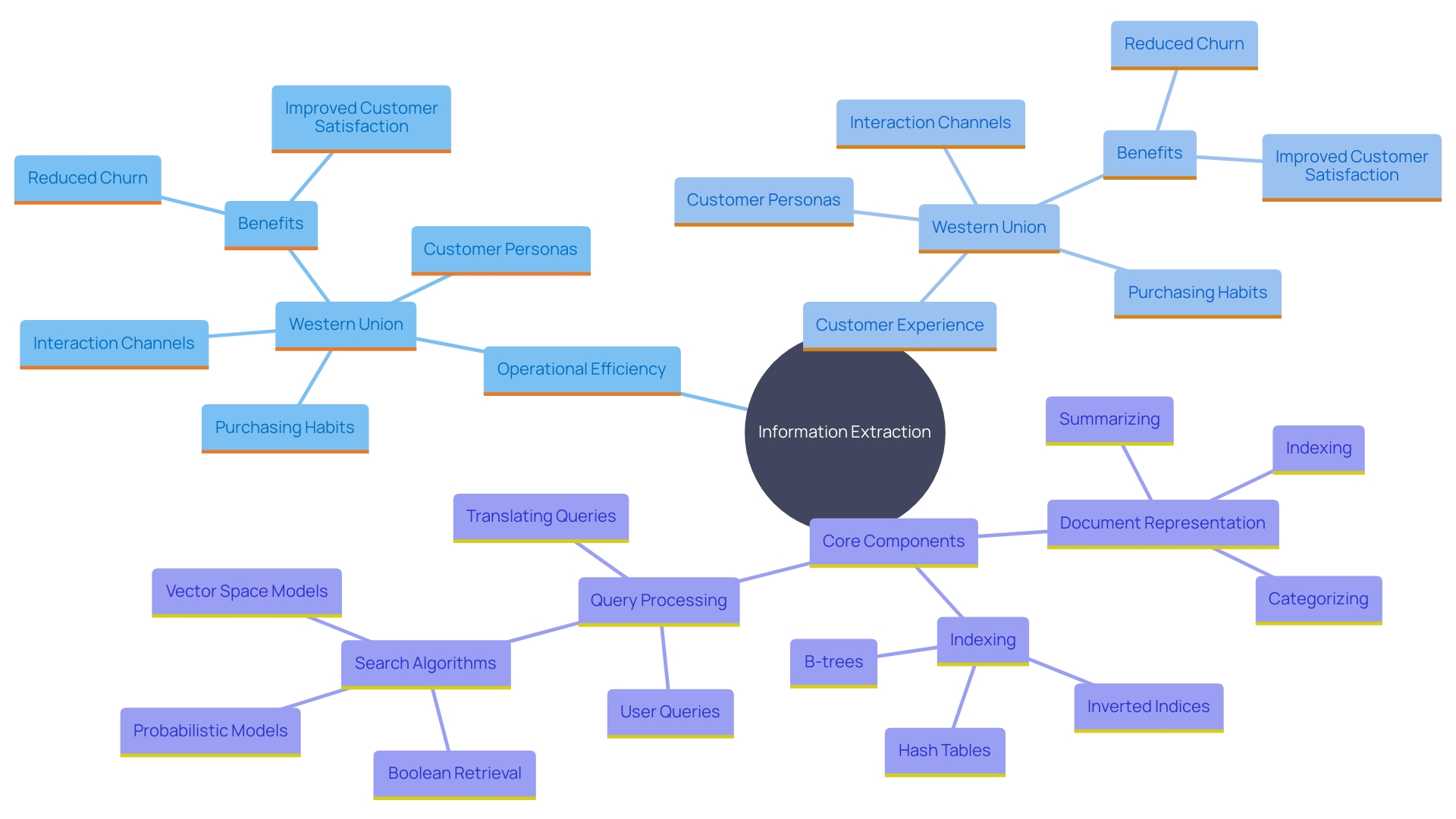
Future Trends in Communication Mining
The future of communication mining is poised to be revolutionized by advancements in artificial intelligence (AI) and machine learning. As these technologies advance, the ability to examine unstructured information will become significantly more refined, allowing entities to derive deeper and more practical insights. According to a report by the Center for Economic Studies, the integration of AI is being adopted in various business applications, highlighting its potential to enhance operational efficiency significantly.
One notable case study involves a telecommunications group that established a common data model across multiple countries. This model facilitated the rapid deployment of analytical models, reducing the time frame for implementing new use cases from five months to just six weeks. This demonstrates how AI-driven analytics can expedite processes and drive cross-functional improvements.
Moreover, real-time analytics integration will enable organizations to respond swiftly to evolving interaction dynamics. As emphasized by specialists from Aragon Research, AI and Copilots are poised to enhance interaction and collaboration, enabling businesses to remain at the forefront of innovation trends. In the words of Antony, a professor of computer science, ‘We’re a largely text-based industry; we deal in language and the nuances of it all day long. So given that it’s large language models (LLMs) that are at the frontier, pushing the boundaries of what we thought AI is capable of, that obviously means a lot more opportunity, but also a lot more risk for our industry specifically.’
This advancement in information analysis not only promises improved efficiency and productivity but also offers a chance for companies to leverage the full potential of AI-driven insights. Entities that adjust to these developments will be better equipped to manage the intricacies of contemporary messaging environments.
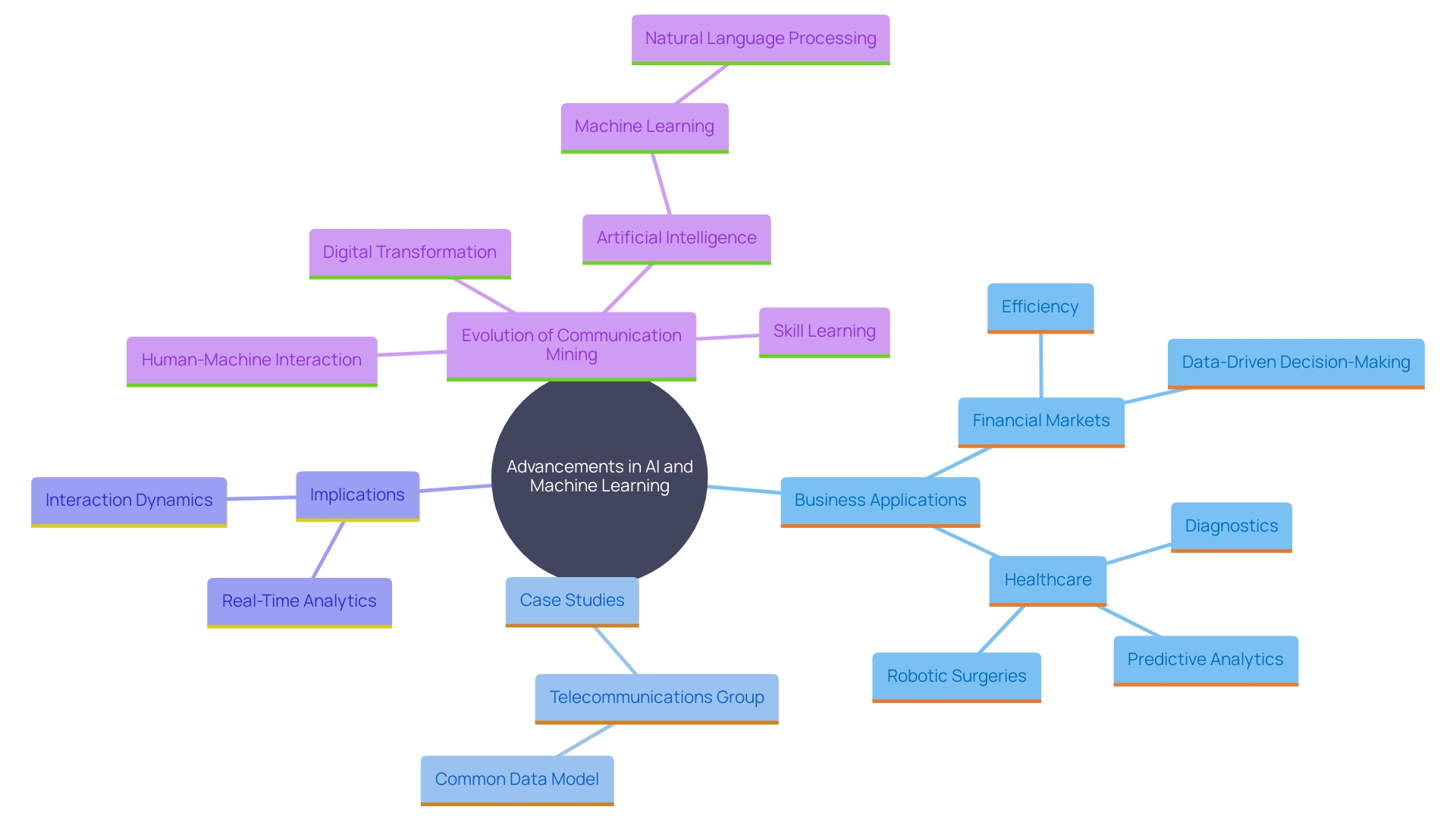
Ethical Considerations and Responsible Use
While communication mining offers significant advantages, ethical considerations must be addressed. Clarity in information gathering and adherence to privacy regulations are paramount. For instance, the U.S. Census Bureau’s adoption of differential privacy highlights the importance of algorithmic transparency and participation, ensuring that user information is protected while still allowing valuable insights to be drawn. Accountable information extraction entails utilizing data to improve dialogue without violating personal privacy, thereby nurturing trust between organizations and stakeholders. As noted by experts, ethical research requires more than just a formal review; it involves a commitment to respect, beneficence, and justice. Organizations should document their ethical decisions and consider the norms and expectations of the communities involved. This approach not only mitigates risks but also ensures that the benefits of communication mining are shared responsibly and transparently.
Conclusion
The insights derived from communication mining present a transformative opportunity for organizations to enhance efficiency and engagement across all levels. By systematically analyzing communication data from various channels, businesses can uncover meaningful patterns and trends that drive informed decision-making. The application of advanced techniques such as natural language processing, sentiment analysis, and machine learning equips organizations to adapt their strategies, ensuring they remain responsive to customer needs and market dynamics.
The real-world applications of communication mining illustrate its vast potential across industries. From improving customer service response times to refining marketing strategies, organizations that embrace this technology can transition from reactive to proactive operational models. Furthermore, the integration of communication mining with existing APIs allows for real-time insights, enabling businesses to maintain high-quality interactions in an increasingly complex communication landscape.
As organizations look to the future, the advancements in AI and machine learning will further amplify the capabilities of communication mining. By harnessing these technologies, businesses can extract deeper insights and drive cross-functional improvements with greater speed and efficiency. However, it is crucial to navigate the ethical considerations surrounding data use.
Prioritizing transparency and privacy will foster trust and ensure that the benefits of communication mining are shared responsibly.
In summary, communication mining not only streamlines internal processes but also enhances customer interactions, driving sustained growth and operational excellence. Organizations that leverage these capabilities will be well-positioned to thrive in a rapidly evolving digital environment, ensuring they remain competitive and responsive to the needs of their stakeholders.

